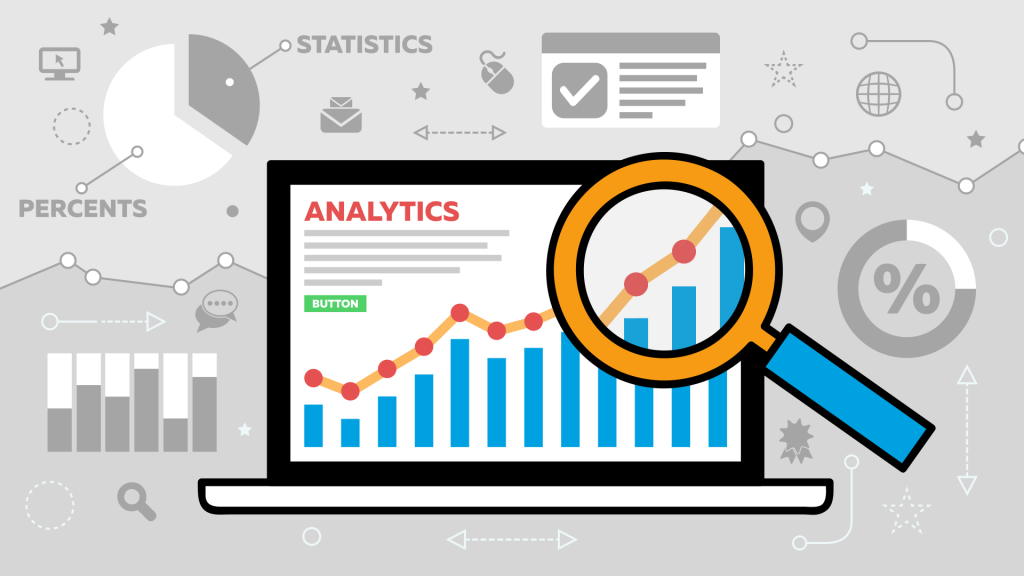There is a lot of talk about the importance of data when it comes to marketing your restaurant, and the best place to get it is your website’s analytics.
Applying that data to your marketing, and especially your site itself, requires a serious understanding of what is happening on your site and what the numbers are telling you. Here are some data sets to focus on and ways they can improve your site.
Avoiding the General Traffic Fallacy
When you first start to learn about Google Analytics, the most prominent data set you’ll see is your site’s general traffic. It’s very easy to associate the success of your site with a rise in general traffic, but that is a dangerous trap to fall into.
General traffic simply indicates that people are visiting your site, from one source or another. That means that your SEO work is doing some good, or that people are aware of your brand from other sources. For a local restaurant business, the general traffic is more than likely coming from local search results on a variation of the search “restaurants near me.”
Alone, general traffic can easily mislead a person into thinking that business is booming on their site when it really isn’t. Only by combining general traffic data with other data sets, like bounce rate, website flow, and traffic sources, can one get a realistic idea of how their site is performing.
Bounce Rate
A common, but extremely useful, analytic that is often displayed near general traffic is bounce rate. Bounce rate indicates that somebody has landed on a page on your site from an external source and then left your site without going to another page. A higher bounce rate means more people are abandoning your site without investigating further.
A high bounce rate can indicate multiple problems on a page or website. The biggest cause for people bouncing away is simply not being able to capture their attention, or not having the content they were expecting. Other causes, though, can be a site that takes too long to load, having a poor/ugly design, and attacking their screens with ads or pop-up offers.
Sometimes, though, high bounce rates aren’t a bad thing. A page hosting your menu, or a contact page with your address with high bounce rates might simply mean people got the information they were looking for and moved on.
Analyze each individual page on your site and determine if a high bounce rate could be a signal that something is wrong with the page. Look at the page in question and try to fix what might be offending or annoying them into leaving. Then, if it improves over time, you’ll know what it was. If not, then try something else.
How People Move Through Your Site
User flow provides a visual representation of how people interact and move through your site. It starts with the most popular pages people land on and where they go from there.
The ideal situation is that from the homepage, visitors will jump to the main feature a restaurant has: its menu. Then, from the menu pages, they’ll go to supporting pages that might include other important info like possible allergies, vegan or gluten free options, how to make a reservation, or catering.
If your site flow differs greatly from your ideal or planned flow, look at what is pulling or distracting visitors. Are the links to navigate to your menu or other pages harder to see or find? If somebody is viewing the site on a smartphone, are links missing or misplaced? Is something happening on the page that is distracting from where you want them to go?
New and Returning Users
The unique visitors data set tells you how many people coming to your site have never been on your site before. This number can be useful in two ways. It tells you how many new people are checking out your site, and how many repeat visitors you have.
Growth with new customers is essential to staying viable, but returning customers are extremely valuable. By subtracting all user sessions minus new users, you can find how many are returning users. Those return users represent that you are doing something worth coming back for.
To improve how many returning users you have, give users a reason to keep coming back. Your restaurant undoubtedly has specials that people love, events you participate in, changes to your menu, and tons of other stuff. Update your website to reflect these, and get people coming back time and time again, both to your site and your restaurant.
Turning Hard Data Into Improvements
By combining different data sets from Google analytics, and with some research into different SEO techniques, you can create plans on how to improve nearly any element of your website and restaurant. Your data is incredibly valuable, and utilizing it can be just what you need to become more successful.
Then, as you make changes, A/B test and experiment to gather more data. Did a specific change improve your response rates? Discover what works and what fails on your site and be constantly trying new things and updating your site. A website shouldn’t be a static entity but something that is constantly changing and improving. Use your data to guide those changes.







